Affiliate links on Android Authority may earn us a commission. Learn more.
OnePlus in 2020: Going to be some growing pains
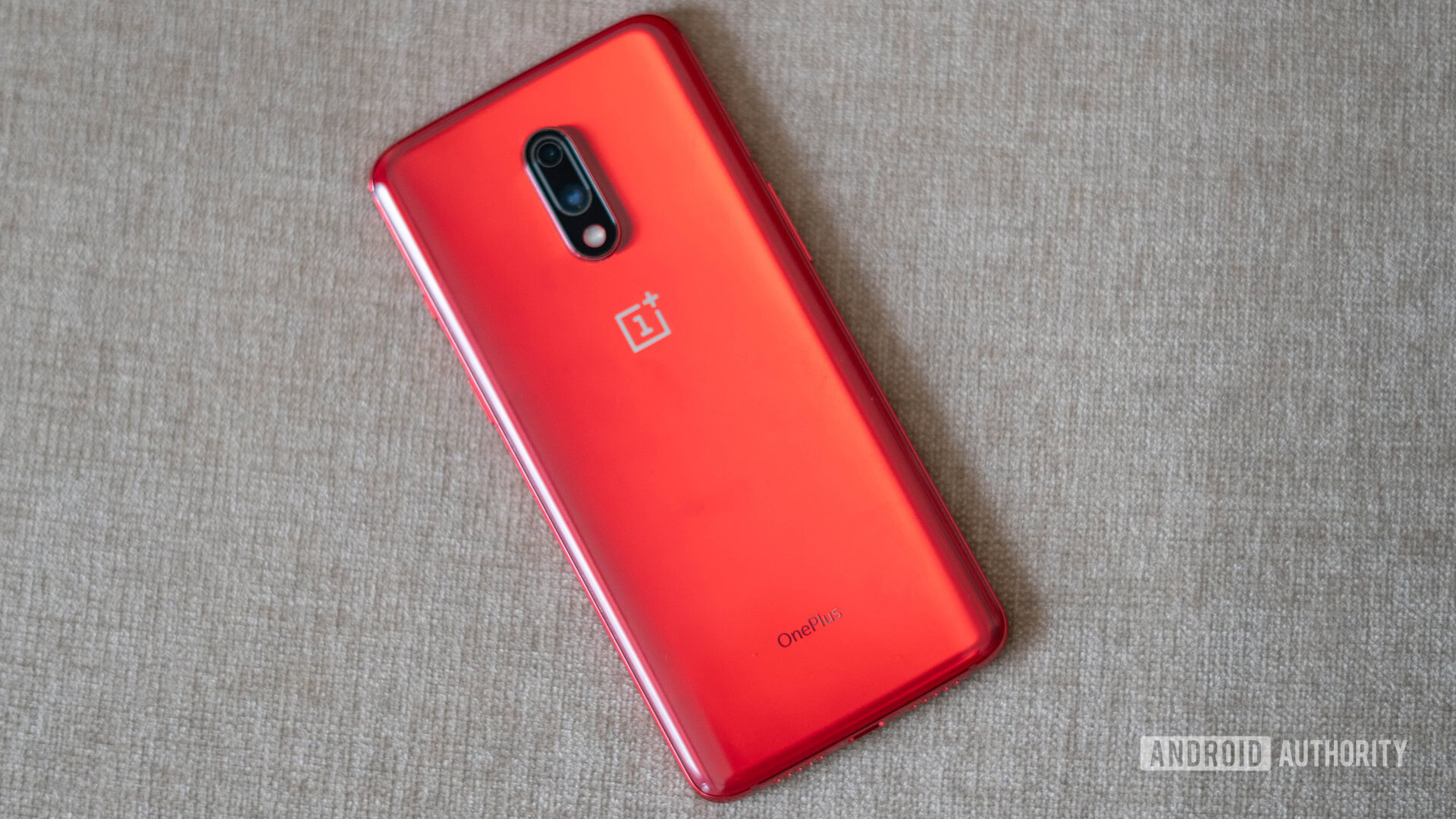
This past year has been quite eventful for Chinese smartphone manufacturer OnePlus. In the company’s short lifetime (it’s only six years old), it’s achieved a remarkable number of major milestones, but 2019 was literally big for the company, in that it expanded more than it ever has.
We saw more OnePlus smartphones in 2019 than we did in the prior two years combined and saw the company expand to a new product category: televisions. We also saw the company take the top premium crown in India, but there are more than a few competitors on its tail ready to take that crown away.
In 2020, OnePlus has its work set out for it. It needs to continue to expand its reach in the smartphone market while also proving that its first television effort isn’t just a one-off experiment. It also needs to prove that it can go head-to-head with other larger companies now that it’s stepping out into the big leagues. The big question is: will OnePlus successfully navigate its 2020 growing pains?
The OnePlus 7 series is biggest ever

Gone are the days in which you see just two OnePlus smartphones each year: a “regular” model in the first half and then a “T” model in the second. Although the company did deviate a bit from this trend in 2018 with the launch of the slightly different OnePlus 6T McLaren Edition, that’s nothing compared to what the company did in 2019.
By the end of 2019, the company released no fewer than seven different smartphones:
- OnePlus 7
- OnePlus 7 Pro
- OnePlus 7 Pro 5G
- OnePlus 7T
- OnePlus 7T Pro
- OnePlus 7T Pro McLaren Edition
- OnePlus 7T Pro 5G McLaren Edition
Granted, not every country saw every phone (which we’ll get to later), but that represents by far the largest set of smartphone launches in one year ever for OnePlus.
The biggest new additions to the family are the “Pro” models, the first of their kind from OnePlus. The Pro models have slightly better specs and feature notch-less, all-screen displays, made possible because of the pop-up selfie camera system. Here in the United States, the OnePlus 7 Pro was the first phone to market with a mechanical selfie camera, as well as the first device with a 90Hz refresh rate on an OLED display and UFS 3.0 storage.
Related: LPDDR5, UFS 3.0, and SD Express: Next-gen memory explained
Meanwhile, the vanilla OnePlus 7 never even made it to the US at all, with OnePlus instead continuing to focus on 2018’s OnePlus 6T as its non-Pro model. At least, that was the case until September when OnePlus released the OnePlus 7T, which is now the de facto non-Pro model in the US and most countries around the world.
The question is, though, whether or not this strategy was the best way to go about things. The name of every OnePlus smartphone this year starts with “OnePlus 7,” and the region-exclusivity of the individual models probably has a negative effect on buyer confidence. Ask yourself this: would the average smartphone consumer (i.e., not someone who reads tech sites all day) know the difference between all those variants? Would they know which device was likely right for them?
Along with the largest slate of smartphone launches in company history, OnePlus also set a new record for pricing. The OnePlus 7T Pro 5G McLaren Edition is now officially the most expensive OnePlus smartphone ever, starting at $899. That’s a far cry from the $299 introductory price of the flagship OnePlus One in 2014.
Expanding the portfolio

OnePlus started venturing out of the realm of only offering smartphones in 2018 with the launch of the OnePlus Bullets Wireless headphones, which it revealed alongside the OnePlus 6. The company updated the headphones slightly in 2019, revealing the OnePlus Bullets Wireless 2. However, these new wireless earbuds weren’t the popular true-wireless variety (think Apple AirPods).
Although headphones are certainly not smartphones, they are a smartphone accessory, so the Bullets Wireless aren’t really that revolutionary of a product for OnePlus.
However, the newest addition to the OnePlus family is certainly a far cry from smartphones: the OnePlus TV. The company first hinted at the launch of a TV in 2018, right around the time people found out the OnePlus 6T wouldn’t have a headphone jack (at the time, the announcement of the TV was likely a diversionary tactic).
Whether it's successful or not, the OnePlus TV represents a seismic shift for the company as a whole.
The OnePlus TV is…good. Our review praised its great picture quality, its seamless integration of the Android TV platform, and its various smart features. However, we also found the TV to be over-engineered and more expensive than the first entry in a debut product line should likely be. Additionally, the OnePlus TV is only available in select markets at the moment, of which the US is not one.
It’s only been a few months since the television launched, but it’s safe to say that the device is not nearly as exciting as the OnePlus One was when it debuted six years ago. The television market is incredibly crowded, so OnePlus has a lot of work ahead of it if it’s going to realistically compete with established TV brands such as Samsung and LG.
OnePlus India success and global growth
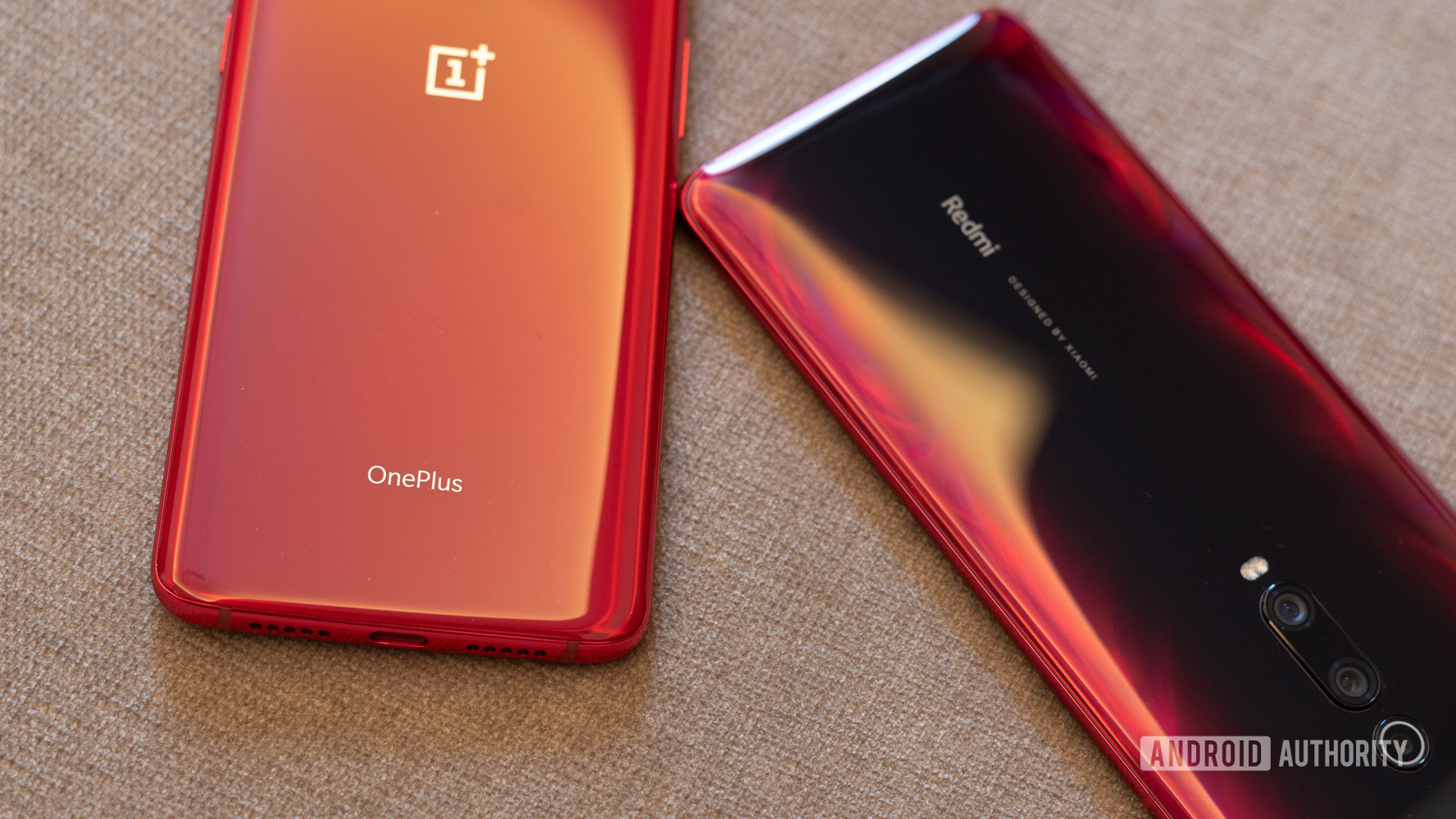
The biggest win for OnePlus in 2018 was its partnership with US carrier T-Mobile. This carrier deal — the first of its kind for OnePlus in the US — saw a OnePlus device hit T-Mobile stores across the country. This put OnePlus in front of new customers who likely had never even heard of the brand before.
The T-Mobile partnership helped OnePlus sell a crazy number of OnePlus 6T phones. In fact, OnePlus admitted that it sold 249% more 6Ts than it did units of the OnePlus 6 in the US.
In 2019, though, the biggest win for OnePlus by far is its market share position in India, one of the world’s biggest and fastest-growing smartphone markets. In that country, OnePlus leads the premium smartphone segment, well ahead of both Samsung and Apple (the latter of which OnePlus threw some serious shade at after the news broke).
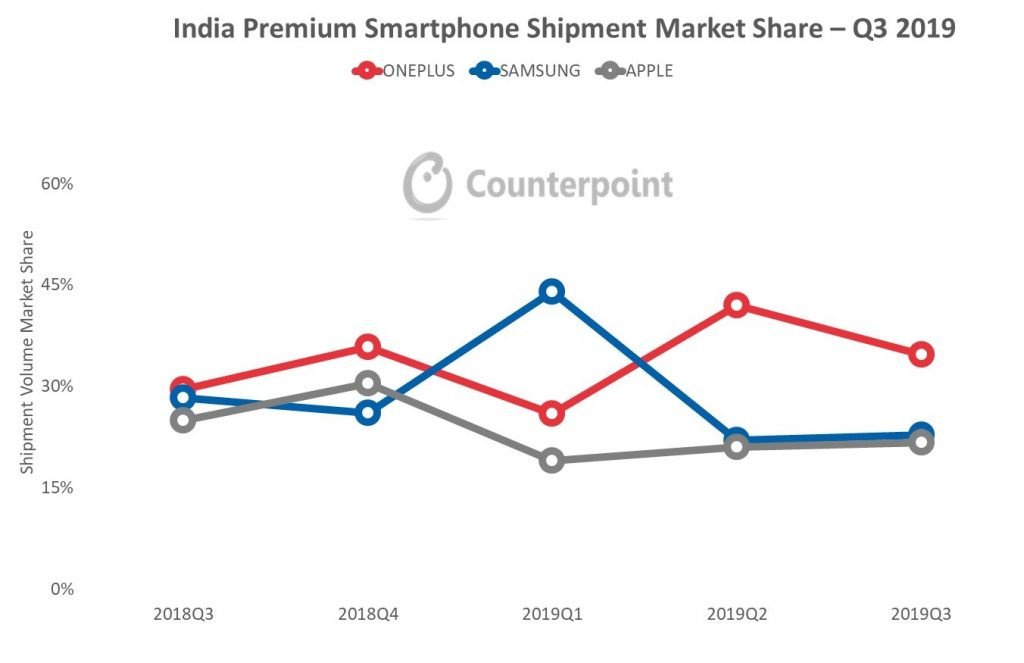
In fact, things are going so well for OnePlus in India that the company opened up a new R&D center in the country. We had a chance to tour it — check out our experience here.
While its wins in India are big news for certain, OnePlus is doing exceptionally well throughout the rest of the world, too. In the United States, it cracked the top-five when it comes to smartphone manufacturer market share in the high-end segment. It also cracked the top-five globally in that same category. This is incredible for such a young company, especially a Chinese one in this very volatile time.
OnePlus is beating both Samsung and Apple in one of the biggest global markets. That's a serious achievement.
Finally, the company made a big push into the world of 5G. It released two different 5G smartphones in 2019, both of which saw exclusive carrier partnerships with providers around the world. With a very small number of 5G devices available to consumers at the moment, this puts OnePlus in a very advantageous position.
For example, there are currently two 5G-capable smartphones available to buy from T-Mobile: the Samsung Galaxy Note 10 Plus 5G and the OnePlus 7T Pro 5G McLaren Edition. If you’re a T-Mobile customer and want a 5G phone, you need to choose between a $1,300 device from the world’s biggest smartphone manufacturer or a $900 phone that offers many of the same specs from a relatively unknown brand. By association alone, this puts OnePlus in a terrific position while it enters 2020, which, by all accounts, will be the year of 5G.
It wasn’t all smooth sailing…
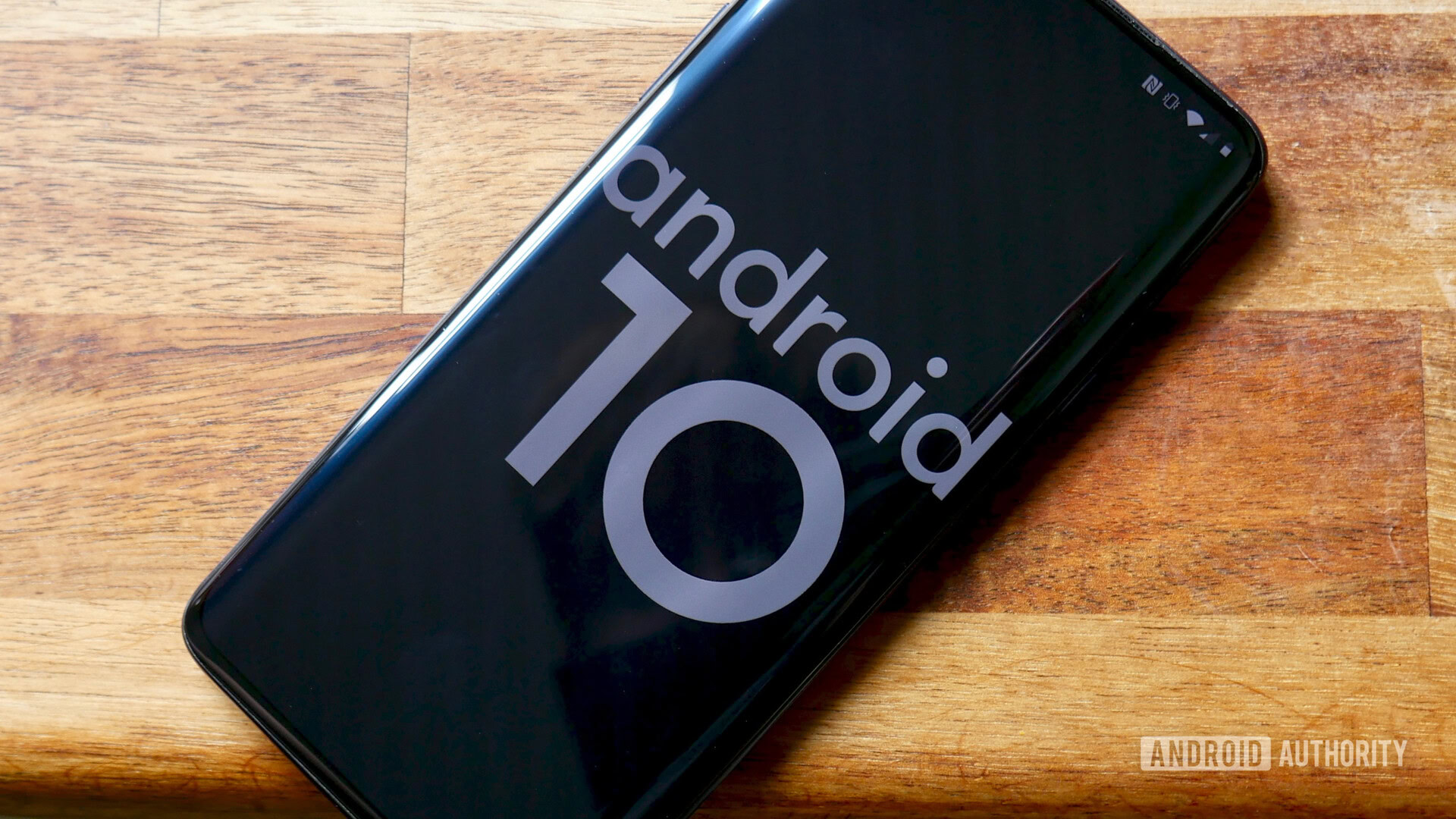
Although OnePlus’ portfolio blew up and its status throughout the world ascended to new heights, the company also faced a fair amount of challenges and setbacks in 2019.
Although the company’s partnership with T-Mobile was a great success at first, it seems things took a dive shortly afterward. The OnePlus 6T allegedly only accounted for 2.4% of smartphone sales at T-Mobile, which certainly isn’t much. Things got even more complicated when T-Mobile started selling the OnePlus 7 Pro — only to abandon it completely a few months later in lieu of the OnePlus 7T (and, eventually, the OnePlus 7T Pro 5G McLaren Edition).
Now, T-Mobile dropping the OnePlus 7 Pro was probably at least partially a move to prevent confusion between products. However, T-Mobile likely wouldn’t have made that move if the 7 Pro was selling incredibly well, or at the very least, as well as the OnePlus 6T. So it’s reasonable to assume the 7 Pro wasn’t flying off the shelves at T-Mobile stores.
Still, OnePlus’ partnership with the carrier still appears strong, so if this really is a setback, OnePlus seems to be taking it in stride.
There were definitely some problems this year for OnePlus, but, as usual, the company emerged from them all relatively unscathed.
Elsewhere, OnePlus faced some considerable problems with its rollout of Android 10. The rollout of the latest version of Android was seriously botched for the OnePlus 7 and 7 Pro and then was botched again for the OnePlus 6 and 6T. From the outside looking in, it appears OnePlus emphasized getting the updates out as quickly as possible over the quality control of those updates. Users reported multiple bugs and performance issues with each initial rollout.
The problems with the Android 10 rollout were not the only technical issues the company faced this past year. There was the infamous “ghost touching” problem that was pretty irritating, as well as a spontaneous shutdown issue that plagued the OnePlus 7 Pro. There was also an issue related to the OnePlus 7 Pro cameras in which the 3x optical zoom the company advertised came with a big ol’ asterisk. You can read more about that here.
Finally, a breach of the Shot on OnePlus app caused hundreds of user emails to leak. While certainly not as bad as the credit card breach OnePlus experienced in early 2018, it was still disconcerting.
Overall though, OnePlus did make it through 2019 without any major, out-of-control problems, and it handily survived the few hiccups it did have.
OnePlus in 2020: Going to be some growing pains
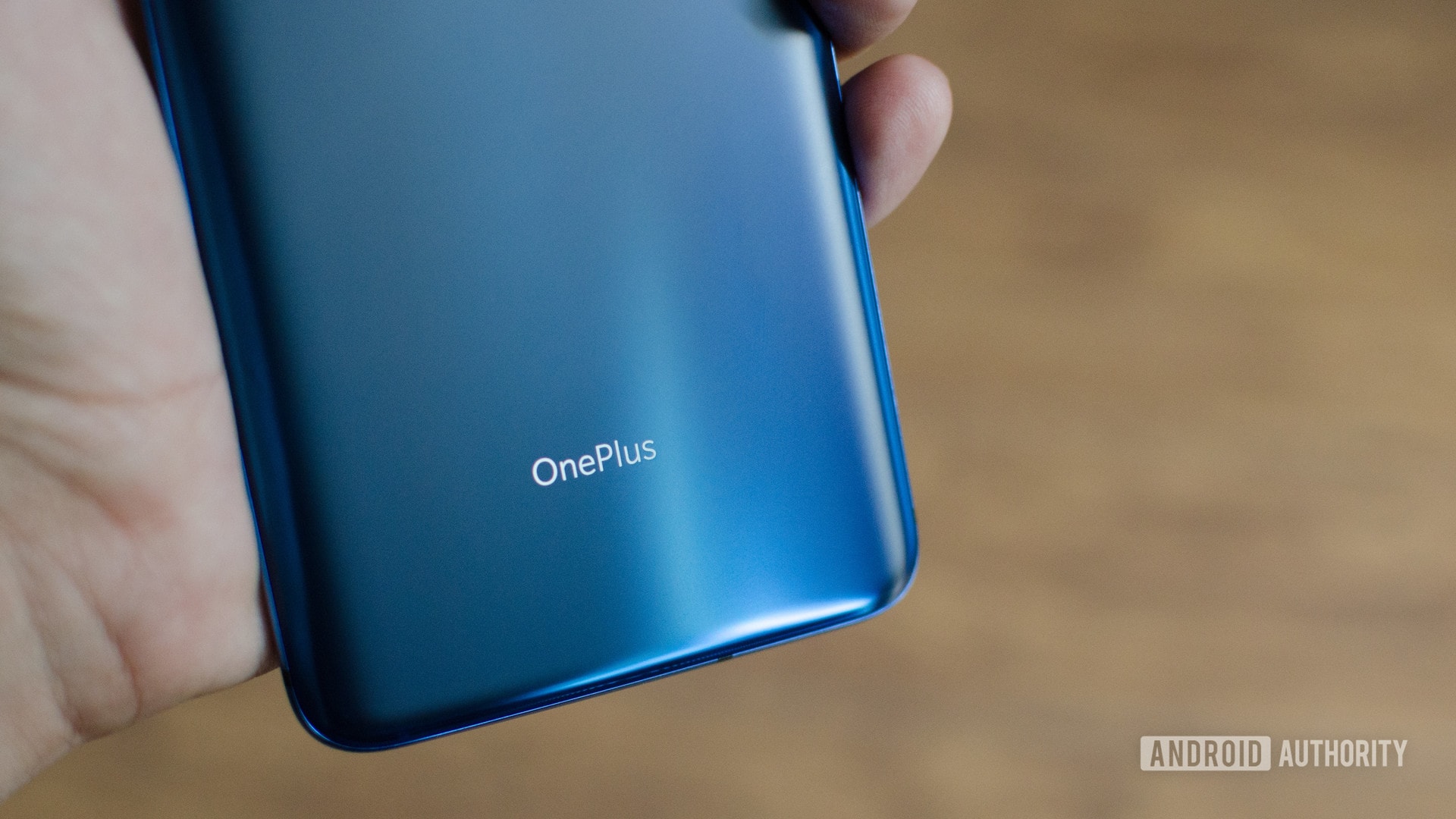
There’s no question that OnePlus is getting bigger. A quick glance at its 2019 portfolio compared to its 2018 portfolio proves that in spades. The real question is whether or not OnePlus can successfully navigate this awkward transition from a niche smartphone manufacturer to a general big-name electronics company?
With that in mind, let’s go over the things we know (or think we know) OnePlus has in the pipeline for 2020.
More new products
In 2019, we got an updated version of the Bullets Wireless headphones and the first iteration of the OnePlus TV. There are already rumors that OnePlus plans to release a set of true-wireless earbuds in 2020 that will go up against Apple’s AirPods and Apple’s other market-defining headphones, BeatsX Wireless.
It’s unlikely that OnePlus will release a new version of its television so soon after the release of the debut, but it does still need to bring the first TV to other markets. As such, you should expect the OnePlus TV to land in new countries throughout 2020.
Additionally, there is a very weak rumor that OnePlus could soon launch a wearable, most likely a smartwatch. These rumors have been popping up for a while now and there’s not enough evidence to make us seriously think that’s what the company will do, but it’s certainly worth mentioning.
So many more phones
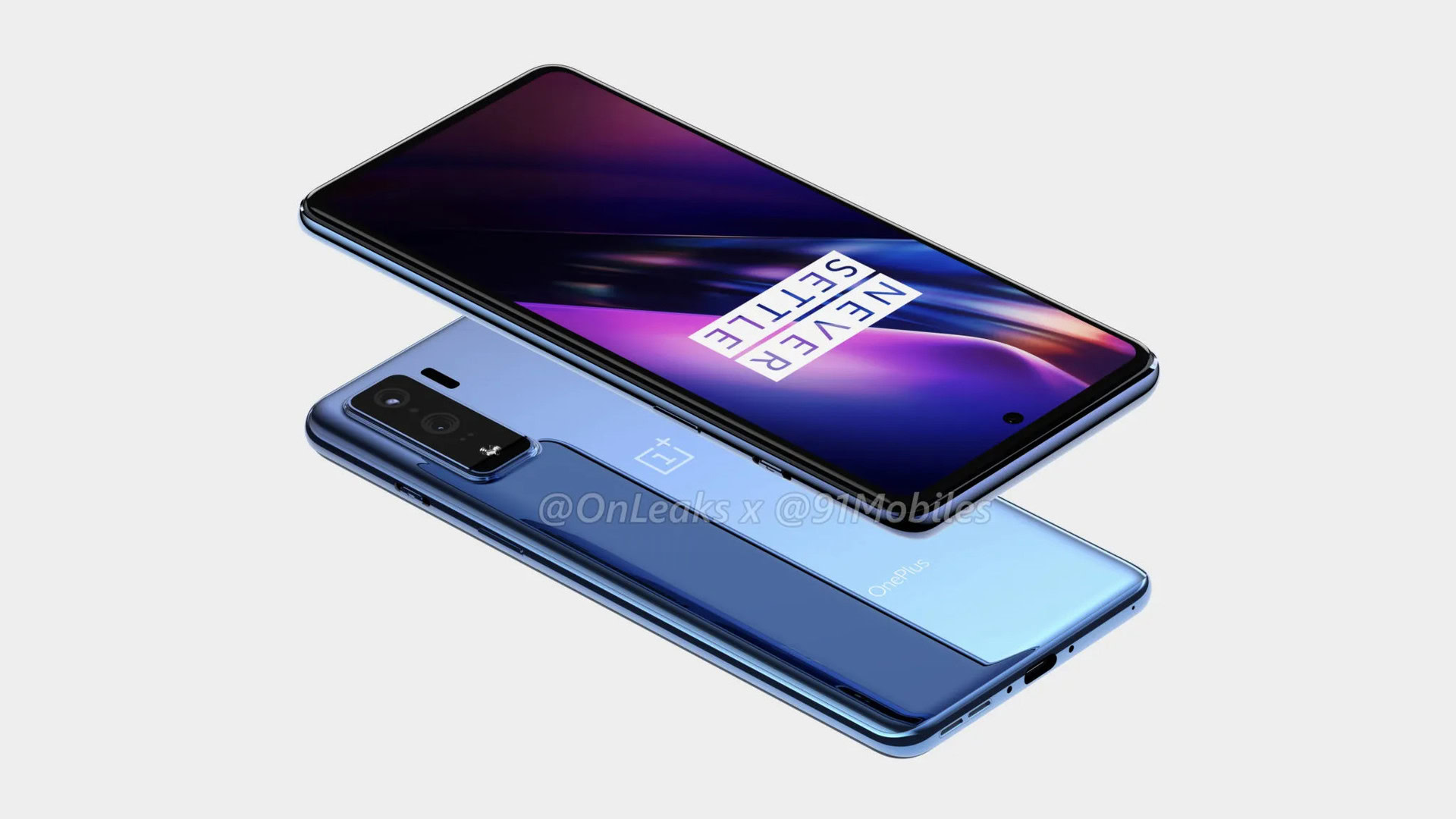
Earlier on in this article, we mentioned that OnePlus’ 2019 smartphone lineup could be confusing for the average smartphone buyer in that every device starts with “OnePlus 7” and region-exclusivity means not all devices are even available. If you hoped that OnePlus might clear up the confusion in 2020, unfortunately, things aren’t looking to go that way.
OnePlus CEO Pete Lau already confirmed that the company will keep its “Pro” strategy in 2020, meaning there will be Pro variants of its main devices. On top of that, we also have rumors that strongly suggest OnePlus could release its first budget-minded device since the OnePlus X. We’re tentatively referring to this phone as the OnePlus 8 Lite.
To be clear, that means we could theoretically see even more OnePlus 8 devices than we did OnePlus 7 devices. Assuming the company repeats its 2019 release strategy in 2020, here are the devices we might see from OnePlus next year:
- OnePlus 8
- OnePlus 8 Pro
- OnePlus 8 Pro 5G
- OnePlus 8 Lite
- OnePlus 8T
- OnePlus 8T Pro
- OnePlus 8T Pro McLaren Edition
- OnePlus 8T Pro 5G McLaren Edition
- OnePlus 8T Lite
While that list seems excessively confusing, there is some good news. There are rumors that OnePlus will finally bring wireless charging to at least one of those devices and we know that every single device OnePlus releases going forward will feature a 90Hz display refresh rate, which includes the OnePlus 8 Lite.
More US carrier partnerships
Here in the United States, OnePlus has carrier partnerships with T-Mobile and Sprint, the latter of which only carries the OnePlus 7 Pro 5G. However, every US phone OnePlus has launched since the OnePlus 6T has been Verizon-certified, so there’s always been the speculation that a OnePlus device will land on Big Red at some point.
Sure enough, a rumor popped up in September that OnePlus could be planning to do just that. However, this rumor came before the company revealed the OnePlus 7 Pro 5G McLaren Edition, which as of now is exclusive to T-Mobile in the US. It’s possible this rumor was wrong and there won’t be a Verizon deal, but we think it’s still in the cards.
The debut of OnePlus Pay

On stage during its India launch for the OnePlus 7T, the company formally took the wraps off OnePlus Pay. Like Google Pay, Apple Pay, Samsung Pay, and the many, many other payment apps around, OnePlus Pay will allow for contactless payments in stores as well as offer other digital wallet features.
Unfortunately, OnePlus didn’t reveal much about OnePlus Pay other than its existence. It did say that it will arrive in India at some point in 2020, so we’ll need to wait and see.
“Something special” at CES 2020
Finally, we know for certain that OnePlus will reveal “something special” at the Consumer Electronics Show in January 2020. OnePlus usually attends CES for PR purposes, but it hasn’t ever held its own event or released any products there.
So far, all we know is that the device is a “concept” phone called the OnePlus Concept One. OnePlus gave the following info on it:
The name itself, Concept One, is a clear promise that this device is only the first in a series to come and shows OnePlus’ commitment to applied, innovative technology — bringing users an ever smoother, faster, and more ‘burdenless’ experience. The OnePlus Concept One demonstrates a vision of both new technology and alternate design approach for the future of smartphones.
What does all that mean? CES 2020 is right around the corner, so we won’t need to wait too long to find out!
Can OnePlus handle the heat of the big leagues?
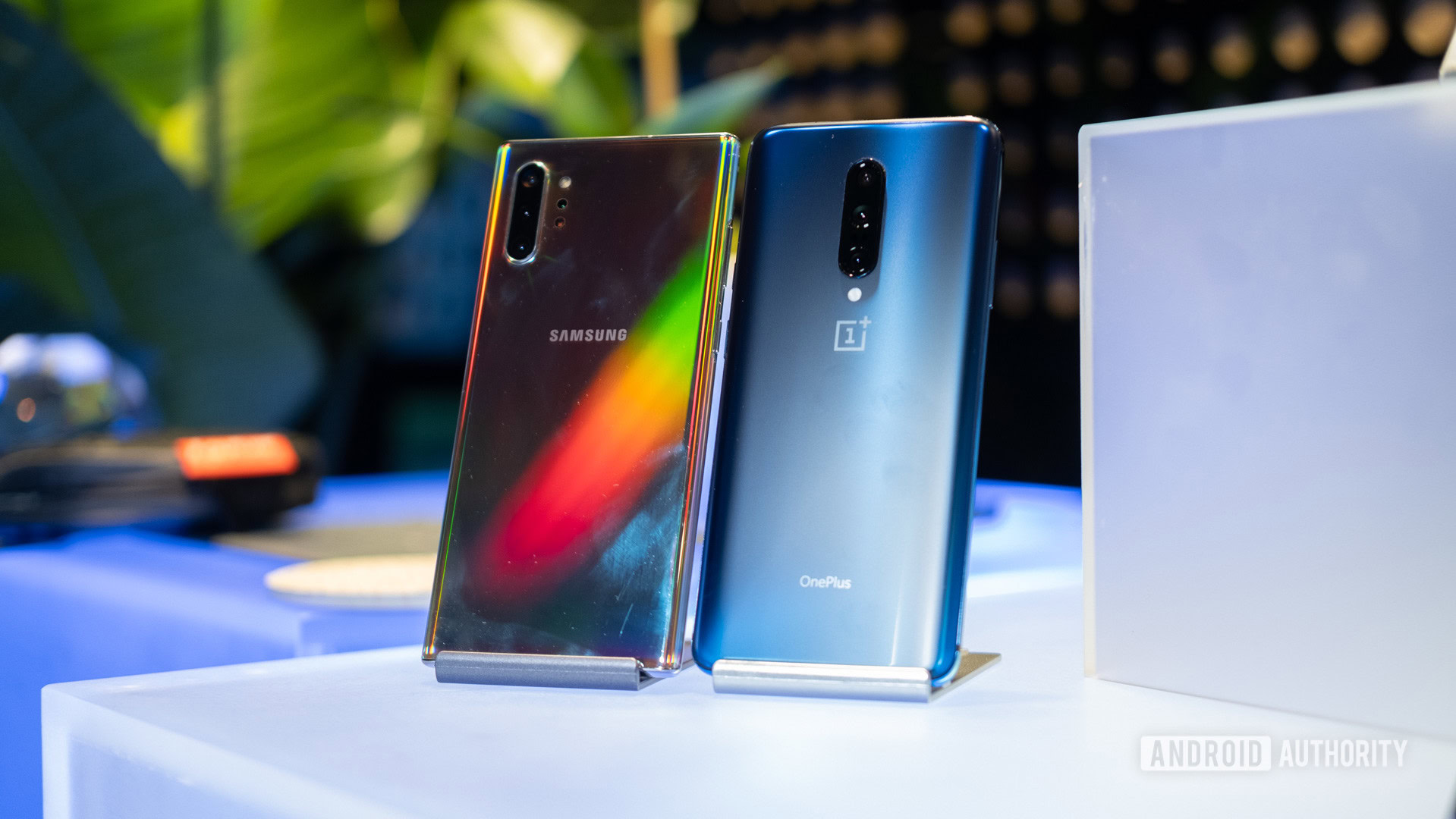
There’s no question that OnePlus has been very successful over the first six years of its existence. However, since its inception, the company has mostly just done one thing each year: release one or two smartphones.
While OnePlus has done a great job at that for sure, that’s not all that difficult. One or two major products each year is a relatively easy thing to do well as all your resources only need to focus on a few things. In 2019, though, OnePlus officially stepped out of its tiny pond where it was the big fish and into the big pond where there are lots of other much bigger fish.
With that in mind, 2020 could be the most important year for OnePlus. This is the year in which it will — or won’t — transition from one kind of company into another. It’s not an impossible feat, but it’s not an easy one, either. The company risks getting too big, too fast or not making a big enough splash to set it apart from its competitors.
It's likely we will think of 2020 as the year OnePlus 1.0 moved into OnePlus 2.0.
Speaking of its competitors, there are a lot of them. Multiple smartphone companies are looking to grab OnePlus’ piece of the pie, including Honor, Xiaomi, Samsung, and even Apple. As OnePlus moves up in the premium market, that leaves space in the mid-range market to be gobbled up. If OnePlus isn’t careful, it could pull the rug out from under itself.
It also needs to deal with the fact that companies such as Samsung, Apple, Google, and others have much, much bigger advertising budgets. Even if OnePlus can create incredible, genre-defining products, that won’t mean anything if Samsung can continuously outspend it in marketing dollars.
Read next: 2020 will be a year of refinement for Android phones
This is all nerve-racking, for sure, but also very exciting. OnePlus can’t stay a child forever — it needs to leave its comfort zone eventually. It appears that 2020 will be that time, so keep your eyes peeled.